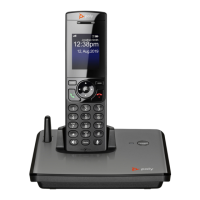Call Routing
34
● Callee-list in a peering object can be empty. It implies the callee object @, meaning any called
number. The preceding ‘>’ can be omitted if callee-list is empty.
● Caller-list in a peering object can be empty. It implies the caller-list @|?, meaning any caller
number including anonymous. The succeeding ‘>’ can’t be omitted if caller-list is empty but not
the callee-list.
Notes on the arg, cid, and target objects:
● The cid object inside an arg object is optional. If omitted, it implies no caller-ID spoofing when
making the call on the specified trunk. The succeeding ‘>’ can be omitted is cid is omitted.
● The target object inside an arg object is optional. If omitted, it implies the target $2, which means to
call the original called number after applying any necessary digit map transformation implied by the
rule. The preceding ‘>’ can’t be omitted if target is omitted but cid isn’t.
● arg object is optional. If omitted, it implies the arg with the target $2 and no cid. If arg is omitted,
the succeeding parentheses () can be omitted also.
An inbound call matches a rule if its caller-number/callee-number matches one of the peering objects of the
rule. Peering objects are tested in the order left and right, and the first matched peering object wins. Rules
are also checked in the order left to right, and the first matched rule wins. Therefore it is important that you
place the more specific rules first in the InboundCallRoute if multiple rules can potentially match the same
inbound call.
InboundCallRoute Examples
dt OR {dt} OR {:dt} OR {@|?>@:dt} (all equivalent)
It says: Ring the handset for all incoming calls. This is the default InboundCallRoute for all trunks.
{(14081223330|15103313456):aa},{(1800xx.|1888xx.):},{dt}
It says: Ring both handset and AA for calls coming from 1 408 122 3330 or 1 510 331 3456, block all
800, 888, and anonymous calls, and ring the handset for all other calls.
{(x.4081113333|x.4152224444):aa},{dt}
It says: Ring the AA for calls coming from any number that ends with 408 111 3333 or 415 222 4444,
and ring the handset for all other calls. Be sure to include the enclosing parentheses in this example, since
“x.” is a digit map specific syntax.
{200123456:aa},{sp1(14083335678)}
It says: Ring the AA for calls coming from 200123456. For all any other call, bridge it by calling 1 408 333
5678 using SP1 Service.
Outbound Call Route Configuration
Every endpoint has an OutboundCallRoute parameter in the device configuration. It tells the device where
to send the call when the endpoint attempts to make a call. Endpoints can call each other or an outside
number using one of the trunks. The OutboundCallRoute syntaxes are almost identical to those of the
InboundCallRoute. The differences are mainly in the implied value when an optional field is omitted, no
caller objects, and one and only one terminal object per terminal-list in an OutboundCallRoute. Forking
isn’t supported when routing outbound calls.
The general format is:
OutboundCallRoute:= rule OR {rule},{rule},….

